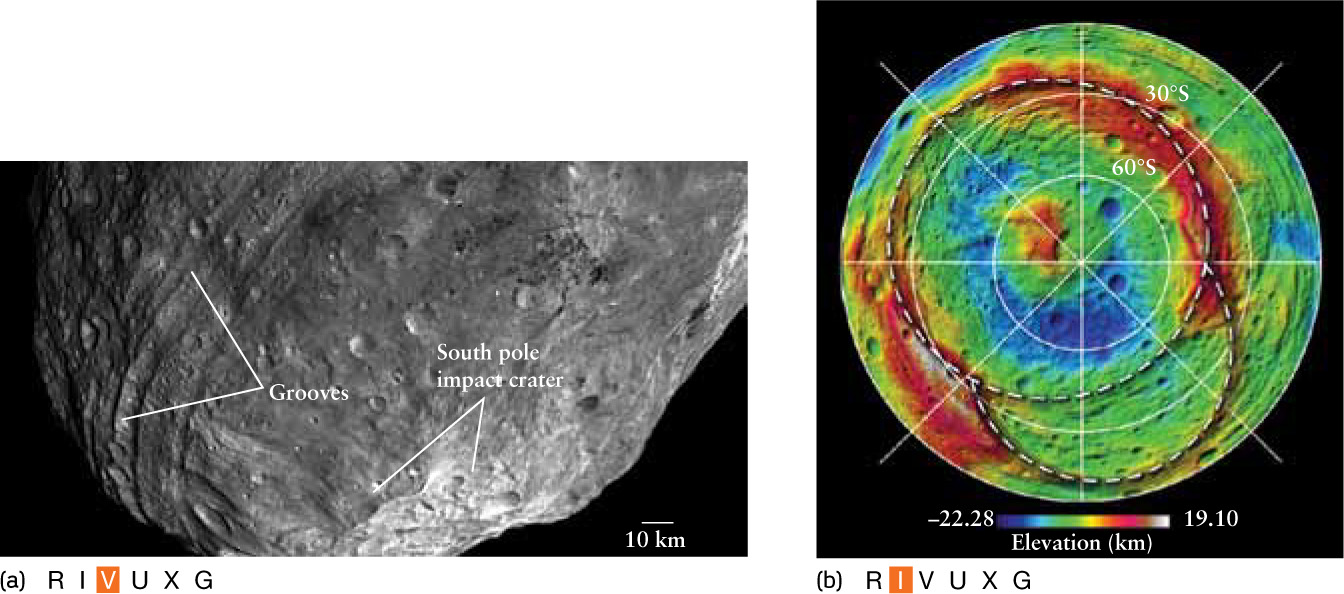
Figure 15-10: Impact on Vesta (a) The impact at Vesta’s south pole appears to have created its unique equatorial grooves. (b) This topographic map looking directly over the south pole shows the outlines of a massive crater named Rheasilvia. The crater is so wide that it covers most of the southern hemisphere and is about 90% the width of the entire asteroid. The central peak (shown in red, about 14 miles high) is similar in size to the largest mountain in the solar system—Olympus Mons on Mars. There is speculation about another large crater underneath Rheasilvia (jutting out in the lower right), but this is uncertain.
(a, b: NASA/JPL-Caltech/UCLA/MPS/DLR/IDA)